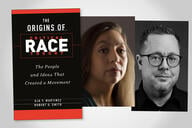You have /5 articles left.
Sign up for a free account or log in.
In recent years, many colleges and universities have turned to mentoring programs in an attempt to retain underperforming students. Federally supported mentoring programs have been around since the Higher Education Act of 1965, which created student services programs such as Upward Bound, said Stephanie Gordon, vice president for professional development of the National Association of Student Personnel Administrators. But as colleges and universities face more scrutiny on retention rates, more institutions have launched or expanded mentoring efforts, Gordon said.
Buffy Smith, an associate professor of sociology and criminal justice at the University of St. Thomas, in Minnesota, says many institutions see mentoring programs as cheap, quick ways to boost recruitment and retention of at-risk students. But for mentoring programs to succeed, they need money and clear objectives, she warns.
In her recent book Mentoring At-Risk Students through the Hidden Curriculum of Education (Lexington Books), Smith offers suggestions for how colleges and universities can guide at-risk students – low-income students, first-generation students and underrepresented minorities – through what she calls higher education’s “hidden curriculum.” The hidden curriculum, Smith writes, consists of the “norms, values, and expectations” that govern interactions among students, faculty, staff and administrators. To excel in college, at-risk students must navigate a world of new social norms – typically those of the white middle class, she argues.
Smith responded by email to questions about her book.
Q: What are some norms and values to which at-risk students often have trouble adjusting?
A: One common college norm is that students have to become comfortable with asking questions when they do not understand something and seeking help when they need academic support. Students often suffer in silence because they do not want to give the impression that they are stupid or do not belong in college.
Another college norm is that students should take the initiative to build social capital with their professors because strong faculty and student relationships are highly valued and rewarded in higher education. If students develop a great rapport with their professors, they are more likely to have access to privileges such as research opportunities and internships.
Q; Do some kinds of institutions need robust mentoring programs more critically than do other kinds of institutions? Is the need for a mentoring program geared toward unveiling a “hidden curriculum” as pressing at a historically black college or a community college as it might be at a wealthy, predominantly white institution?
A: All institutions have a formal curriculum and a hidden curriculum. Since students are either rewarded or penalized based on their knowledge of the hidden curriculum, it is important to unveil the hidden cultural codes and norms to students at all institutions.
I do not believe wealthy predominantly white institutions are the only institutions that struggle with how to systematically unveil the hidden curriculum to their student populations. For instance, an African-American male, first-generation college student would face difficult challenges decoding, interpreting, and understanding the hidden curriculum at historically black colleges and universities. Although a black male might face less racial prejudice and discrimination at a HBCU, he would still need mentors to help him translate the hidden rules of his school in order to maximize his privileges, opportunities, and resources on campus.
Q: You write that “some scholars are very concerned that good-hearted white mentors will encourage underrepresented protégés to replace their home culture with the majority culture in order to succeed in higher education.” How does a mentor go about giving a student the social tools to succeed in college without tacitly encouraging that student to adopt the majority culture?
A: The goal of academic mentoring is to provide students with the knowledge and skills they need to thrive in school. Mentors have to be mindful not to “groom” students to become like them, regardless of their racial/ethnic, gender, or social class backgrounds. The primary focus of mentoring is transmitting information and knowledge to students, not replacing their cultural identities.
One way mentors can avoid the cloning process is to be intentional and explicit about affirming and validating their students’ home cultures in words and actions. Mentors and mentees should have honest conversations and decide together on the most effective approach for integrating home culture with school culture. Good mentors never implicitly or explicitly encourage mentees to ignore or replace their multiple cultural identities; rather, mentors empower students with the necessary skills to adapt to and succeed in their academic environment. Simply put, mentors should promote acculturation (i.e., adapting to the culture of higher education) not assimilation (i.e., adopting another group’s cultural identity). For example, mentors should teach mentees how to talk with professors in a polite and respectful tone without implying that students need to change their dialect or style of speech.
Q: Where do current mentoring programs fall short?
A: The major challenge that many mentoring programs encounter is that they do not have well-defined objectives that can be measured and directly connected to the mentoring process. For instance, it is difficult to argue that a student’s improvement in grades is directly related to her mentoring relationship when the student could have also benefited from tutoring and other support services. In order for mentoring programs to become more robust, they should incorporate assessment plans that actually link mentoring activities with desired education outcomes.
Q: You develop a mentoring model that has three cycles: advising, advocacy and apprenticeship. Tell me about these three cycles.
A: An example of how the mentoring cycles work is the following. A student who earned a “D” grade on his exam is told by his mentor to go talk with the professor about the exam (advising cycle). The mentor might also use her social capital to connect with the mentee’s professor to talk about test strategies that could help the mentee on future exams (advocacy cycle). Finally, the mentor will share the test strategies and role-play with her mentee about how he should talk with his professor to get the best education outcomes and build social capital with the professor (apprenticeship cycle).
As educators, we usually do a good job at the advising cycle, but it is important that we not stop there. We should advocate for our students, and more importantly, we need to empower our students to become advocates for themselves. A simple way of thinking about the mentoring cycles is that advising is telling students what to do, advocacy is doing things on behalf of the students, and apprenticeship is empowering students by showing them repeatedly how to be confident and proactive in their own education and build meaningful relationships with administrators, staff members, and faculty.
Q: How important is it for a mentor to be of the same race, class or gender as the mentee? You say there’s inconclusive evidence on this point. Yet your fictional mentor draws on her own experiences as “a faculty of color” in order to validate her mentee’s feelings.
A: Research suggests that matching mentors and mentees on the basis of race, ethnicity, social class, or gender is not the best way to produce successful mentoring relationships. Instead of trying to match individuals based on socially constructed identities, mentoring program directors should encourage mentors and mentees to establish clear expectations and norms, have honest conversations, and provide quality feedback that fosters trusting and meaningful relationships with one another.
Q: What are some best practices for mentoring programs?
A: One best practice for mentoring programs is to develop a mentoring curriculum that explicitly focuses on topics related to the hidden curriculum. For instance, all mentors in the network would teach the same topics (e.g., the importance of adhering to deadlines and showing up for scheduled appointments, and how to pose certain questions to demonstrate intellectual curiosity) to their mentees. The mentors would have varied teaching styles, but the hidden curriculum content would be similar.
I believe colleges should reform their existing mentoring programs to include unveiling the hidden curriculum as a major objective, and create a uniform standard for teaching the knowledge and skills necessary to decode, interpret, and understand the hidden curriculum. Once a mentoring curriculum is established, it will be easier to evaluate learning outcomes of the mentoring process.
Q: You write that a college “cannot run a successful mentoring program without a full-time mentoring program director, full-time administrative assistant, a medium-size private office space that is designed exclusively for mentoring services … and a budget line that is comparable to similar programs at the college." In addition, you say that program directors should not assign more than two students to a mentor. Is this financially realistic?
A: University administrators have to make difficult decisions as to how they will allocate their resources. I recognize there are more good initiatives than financial endowments. However, I have learned that programs considered essential to promoting the university’s values and mission receive institutional funds and are not perceived as “administrative bloat.”
Therefore, colleges have to decide if mentoring represents a core value of their institution. If schools perceive mentoring programs as a cheap and quick remedy for improving “diversity” issues on campus, they will not provide the institutional staff and support that I recommend. However, if universities redefine the mentoring process as a crucial component for students’ learning and excelling in the formal curriculum, they are more likely to provide adequate funding.
This interview has been edited and condensed.




